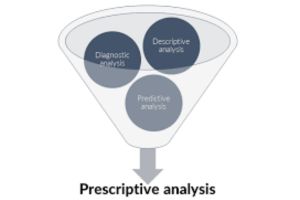What are the four Types of social media analytics and it’s important
The world of social media is multiplying day by day and the data shared in it is a very cumbersome task to handle and make audience analysis, competitive research, and product research. The purpose of social media analytics is to gather and analyze the data of social media to inform business decisions.
Let’s understand the Social Media Analytics
Social Analytics helps you to make you understand how efficiently your market strategies are working on different platforms. Social media is a very competitive world, and to gain a grip on these platforms, a person should know about the social media matrix. and their analytics.
Every brand tries hard to connect with its customers. After the compilation of the difficult process of strategy, there is time to analyze your hard work.
Social media analytics helps you to find out many queries about your strategies, is they working, and to what extent it is good enough to achieve your goal.
Some other queries that are covered under their work are :
- Do you know the social movements that are important for your business.?
- Do you know how to calculate the ROI of your work on different social media platforms?
- As a technical person, you have to understand what is the demand of users. what they want from your content and messaging. How your content is better than your competitors?
- What are your competitors ‘ affairs that should be of great concern to you?
- Are you achieving the desired goal as you planned?
Social media analytics tools are efficient enough to generate all answers to the questions mentioned above.
Types of Social Media Analytics:
There are 4 types of social media analytics SMA, which depend on business objectives. Named Descriptive Analytics, Predictive Analytics, prescriptive Analytics, and Diagnostics Analytics. Social media analytics is the art that uproots valuable data from the pool available on social media.
#1. Descriptive Analytic
Descriptive analytics is the process by which you will find out the question of ‘what happened or what is happening.’SMA works on social media data and by using this they generate desired analytics in the form of graphs, reports, and visualizations and assemble them to generate business problems and opportunities.

Netizens give social media comments for their views about the service or products. These comments are analyzed under SMA for a better understanding of users’ sentiments or to identify the trending things or topics by assembling all the data received by the user. The majority of social media analyses have their landscape on SMA.
#2. Diagnostic Analysis:
The diagnostic analysis answers the question ‘Why did something happen?’A ture of this analysis provides you with an overview of your past campaign in terms of your data that worked or did not work.

As discussed, Descriptive Analysis is where you work on social media campaign performance in terms of posts, reviews, followers, views, pins, etc. In this analysis, you work on inferential analysis, behavior analytics, correlations & retrospective analysis. The outcome of these reviews is the cause-and-effect investigations of business issues.
#3. Predictive Analytics:
As the name suggests in this SMA, calculated predictions of the market scenario play a role. It gives the result of the question “What will happen/why will it happen”.It accumulates all the data available on social media in the form of buy, sell, recommend, quit, desire, or wish. Analytics works on this data and predicts future events such as purchases. Based on these results a business can predict its sales and work accordingly.
#4. Prescriptive Analytics :
As you see the nature of predictive analysis predicts future events, and perspective analysis helps to make future decisions in light of past investigations. You can understand by this example if you have groups of social media users that display certain patterns of buying behavior, how can you inhense your offering to each group?

The main focus of prescriptive analytics covers improvement and simulation modeling, multi-criteria decision modeling, expert systems, and group support systems.
Read Also: AI Data
References
1. Khan G. F., 2015, Seven layers of social media analytics: Mining business insights from social media text, actions, networks, hyperlinks, apps, search engines, and location data, CreateSpace Independent Publishing Platform.
2.https://www.analytikus.com, Dr.Gohar Khan